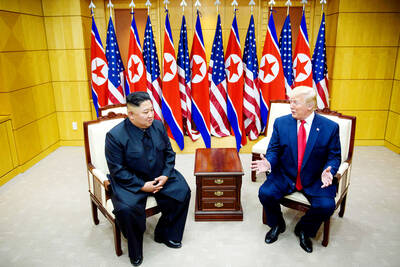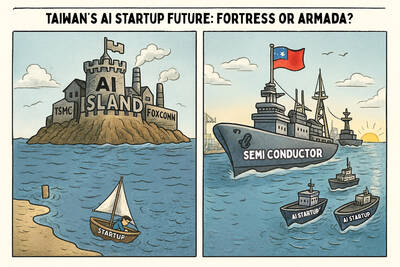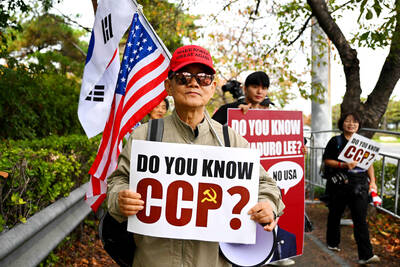From my many years as a therapist and advice columnist, I’ve started to see clear patterns in the problems that bother my readers the most. And I can confirm that existentialist philosopher Jean-Paul Sartre was right: hell is other people. It’s difficult relationships with those around us that cause the most anguish. It’s such a common theme that I’ve given a lecture on the subject: Why are other people so awful? To help you into the new year, here’s some advice on this most commonly experienced problem.
Struggles in connecting to others — or, more specifically, the tension between wanting connection and feeling disconnected — can manifest in many ways. As well as difficulties in existing relationships, such struggles can also make you feel lonely or alienated.
This sense of not belonging can undermine your wellbeing whether at work, home or even when doing pickup at the school gates.

Photo: AP
Many of us are anxious about how others perceive us, fearing rejection, which prevents us from forming meaningful connections. We often struggle with our self-worth and identity, feeling either unworthy or insecure in comparison to others, or — which is just as isolating — feeling superior to them. This leads to communication problems, which is another huge barrier to forming fruitful and honest relationships at work and home.
Alongside these often practical, interpersonal struggles, there’s also the more existential longing for deeper meaning in our lives — a desire to understand our place in the world and find purpose.
At the core, these issues touch on our innate need for connection, not only with others, but also with ourselves, and with that a broader sense of meaning in life.
So how do we achieve this? Well, for some, getting on with others just comes naturally. They just know when to smile, when to nod, how to be interested and how to lie to avoid hurting anyone’s feelings. They can naturally read people in professional settings and in their social circle. The rest of us just have to learn them.
Those who have these skills — often called “people skills” or “soft skills” — may mistakenly assume that those of us without them are being deliberately offensive. Recognizing where your innate ability lies is important. To do this you have to be able to accept all aspects of yourself, even the uncomfortable or imperfect parts, like jealousy or our capacity to hate. When we stop suppressing these complexities and embrace ourselves, we become more open to genuine connection with others. We can relate to those around us without the need to hide, compete or project insecurities.
By recognising these traits and accepting our strengths and weaknesses, we begin to relate to others with greater authenticity. It’s about being true to who we are, rather than presenting only what we think we should be.
Projection is another big obstacle to connection. When we haven’t acknowledged parts of ourselves, we tend to project these unresolved traits on to others. For instance, if we feel judged by others, it might reflect our own tendency to judge those around us. If you feel uncomfortable with other parents at the school gate, consider if your initial thoughts that they’re judging you are true, or whether you have feelings of inadequacy about your parenting skills, or lack confidence in these brief but fraught social interactions.
Often, we believe the solution to our problems lies outside ourselves, believing that if we leave the job, the relationship, everything will be fine. Of course, that can sometimes be true and it’s important to be alert to situations which are truly damaging. But the path towards feeling more connected to others usually starts from within. We must examine how we talk to ourselves, uncover the covert beliefs we live by, and confront the darker aspects of our psyche. One of the most disconnecting forces is our expectations of how others should be — but learning to accept people and things we cannot change can help us become more sanguine.
By acknowledging our shared humanity, and confronting our projections, we can form more genuine connections. Other people can be frightening, frustrating and downright annoying, but remember we’re all in the same boat and, hopefully, that journey will become more plain sailing. And, if someone ever really gets to you — you can always write to me for some more advice!

When Taiwan was battered by storms this summer, the only crumb of comfort I could take was knowing that some advice I’d drafted several weeks earlier had been correct. Regarding the Southern Cross-Island Highway (南橫公路), a spectacular high-elevation route connecting Taiwan’s southwest with the country’s southeast, I’d written: “The precarious existence of this road cannot be overstated; those hoping to drive or ride all the way across should have a backup plan.” As this article was going to press, the middle section of the highway, between Meishankou (梅山口) in Kaohsiung and Siangyang (向陽) in Taitung County, was still closed to outsiders

US President Donald Trump may have hoped for an impromptu talk with his old friend Kim Jong-un during a recent trip to Asia, but analysts say the increasingly emboldened North Korean despot had few good reasons to join the photo-op. Trump sent repeated overtures to Kim during his barnstorming tour of Asia, saying he was “100 percent” open to a meeting and even bucking decades of US policy by conceding that North Korea was “sort of a nuclear power.” But Pyongyang kept mum on the invitation, instead firing off missiles and sending its foreign minister to Russia and Belarus, with whom it

President William Lai (賴清德) has championed Taiwan as an “AI Island” — an artificial intelligence (AI) hub powering the global tech economy. But without major shifts in talent, funding and strategic direction, this vision risks becoming a static fortress: indispensable, yet immobile and vulnerable. It’s time to reframe Taiwan’s ambition. Time to move from a resource-rich AI island to an AI Armada. Why change metaphors? Because choosing the right metaphor shapes both understanding and strategy. The “AI Island” frames our national ambition as a static fortress that, while valuable, is still vulnerable and reactive. Shifting our metaphor to an “AI Armada”

The Chinese Communist Party (CCP) has a dystopian, radical and dangerous conception of itself. Few are aware of this very fundamental difference between how they view power and how the rest of the world does. Even those of us who have lived in China sometimes fall back into the trap of viewing it through the lens of the power relationships common throughout the rest of the world, instead of understanding the CCP as it conceives of itself. Broadly speaking, the concepts of the people, race, culture, civilization, nation, government and religion are separate, though often overlapping and intertwined. A government